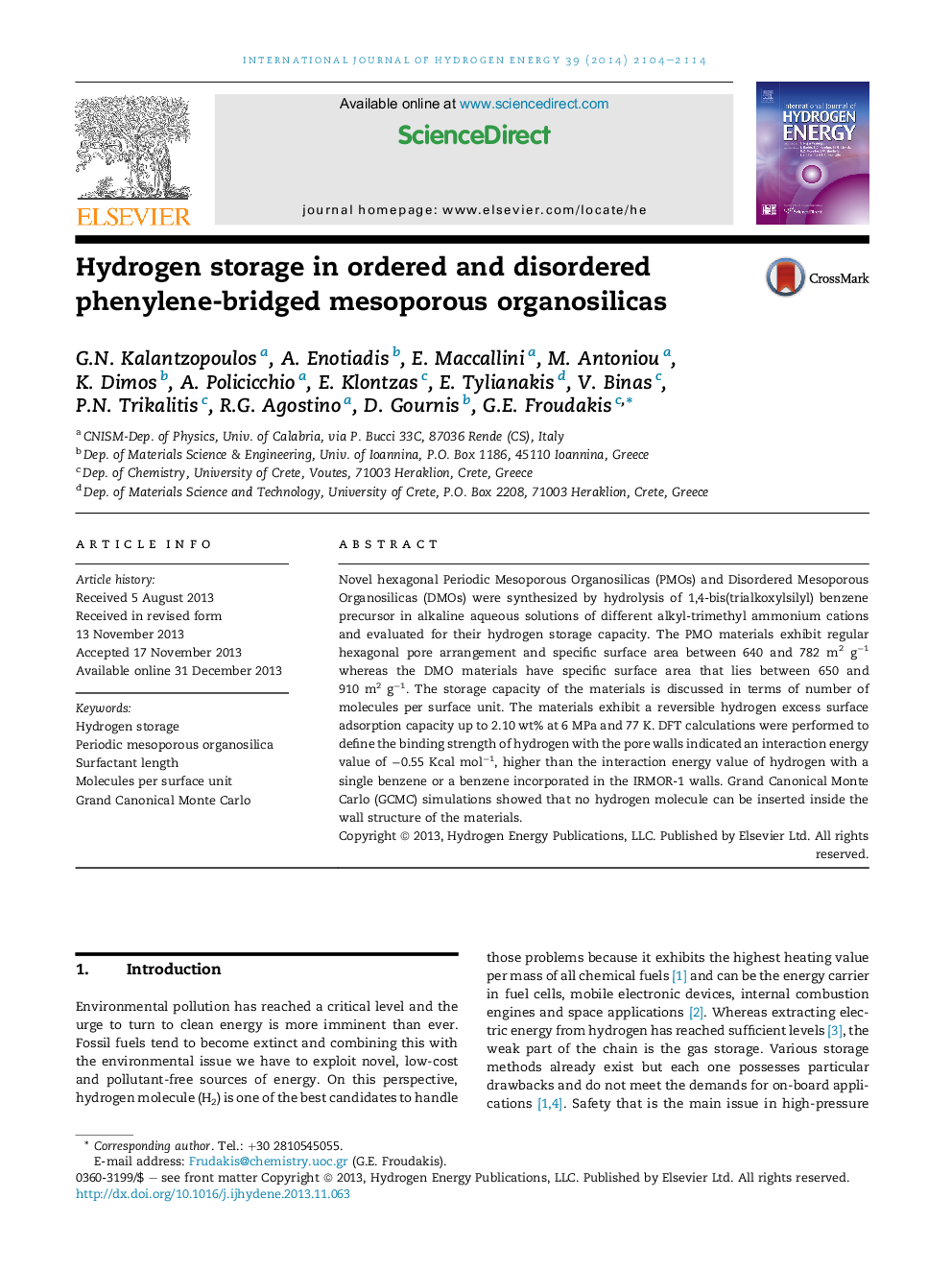| Article ID | Journal | Published Year | Pages | File Type |
|---|---|---|---|---|
| 7720786 | International Journal of Hydrogen Energy | 2014 | 11 Pages |
Abstract
Novel hexagonal Periodic Mesoporous Organosilicas (PMOs) and Disordered Mesoporous Organosilicas (DMOs) were synthesized by hydrolysis of 1,4-bis(trialkoxylsilyl) benzene precursor in alkaline aqueous solutions of different alkyl-trimethyl ammonium cations and evaluated for their hydrogen storage capacity. The PMO materials exhibit regular hexagonal pore arrangement and specific surface area between 640 and 782 m2 gâ1 whereas the DMO materials have specific surface area that lies between 650 and 910 m2 gâ1. The storage capacity of the materials is discussed in terms of number of molecules per surface unit. The materials exhibit a reversible hydrogen excess surface adsorption capacity up to 2.10 wt% at 6 MPa and 77 K. DFT calculations were performed to define the binding strength of hydrogen with the pore walls indicated an interaction energy value of â0.55 Kcal molâ1, higher than the interaction energy value of hydrogen with a single benzene or a benzene incorporated in the IRMOR-1 walls. Grand Canonical Monte Carlo (GCMC) simulations showed that no hydrogen molecule can be inserted inside the wall structure of the materials.
Related Topics
Physical Sciences and Engineering
Chemistry
Electrochemistry
Authors
G.N. Kalantzopoulos, A. Enotiadis, E. Maccallini, M. Antoniou, K. Dimos, A. Policicchio, E. Klontzas, E. Tylianakis, V. Binas, P.N. Trikalitis, R.G. Agostino, D. Gournis, G.E. Froudakis,
